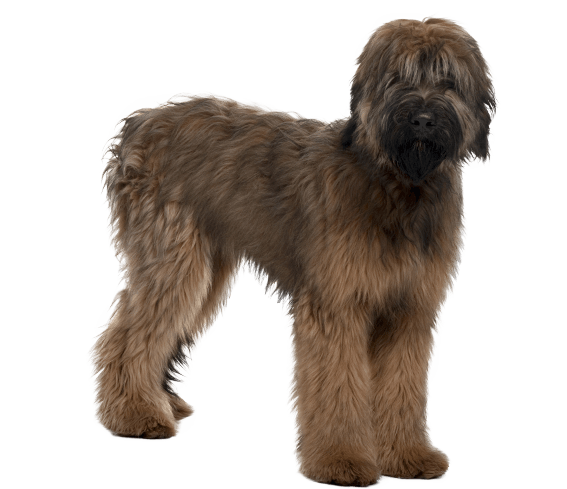Briard Breed Maintenance
The shaggy coat of the Briard needs regular grooming, or else it can become matted. If left unkempt, the tangles can lead to painful skin infections called hot spots on the dog’s skin. Plan to brush your Briard every other day to weekly to keep the hair free of mats. Due to the coarse nature of the hair, dirt and water do not cling to it, and consistent grooming can ensure a clean coat. If groomed regularly, the Briard sheds very little. It can shed seasonally, often in the spring or fall, after which time the hair may grow in a different color. Bathe the Briard only when dirty, which may only be every month or two. The beard may soak up food and water, and may need to be washed more often. The hair between the pads of the feet should be trimmed, as should any excess hair within the ears. Ears should also be cleaned regularly. This breed has lots of energy that was once needed for herding, and is not content lying around the house. Keep your Briard busy with walks, runs, and swims, except during extremely hot weather. Be sure to leash or fence in this dog when outdoors, as it has a high prey drive. This breed can live comfortably in the country or city, provided it has a fenced in yard to run in. This large dog does not do well in cramped environments, and should never be kenneled. The diet should be appropriate for its size, and may need to be adjusted with dietary supplements to deter rapid growth, or if affected by seasonal alopecia.






